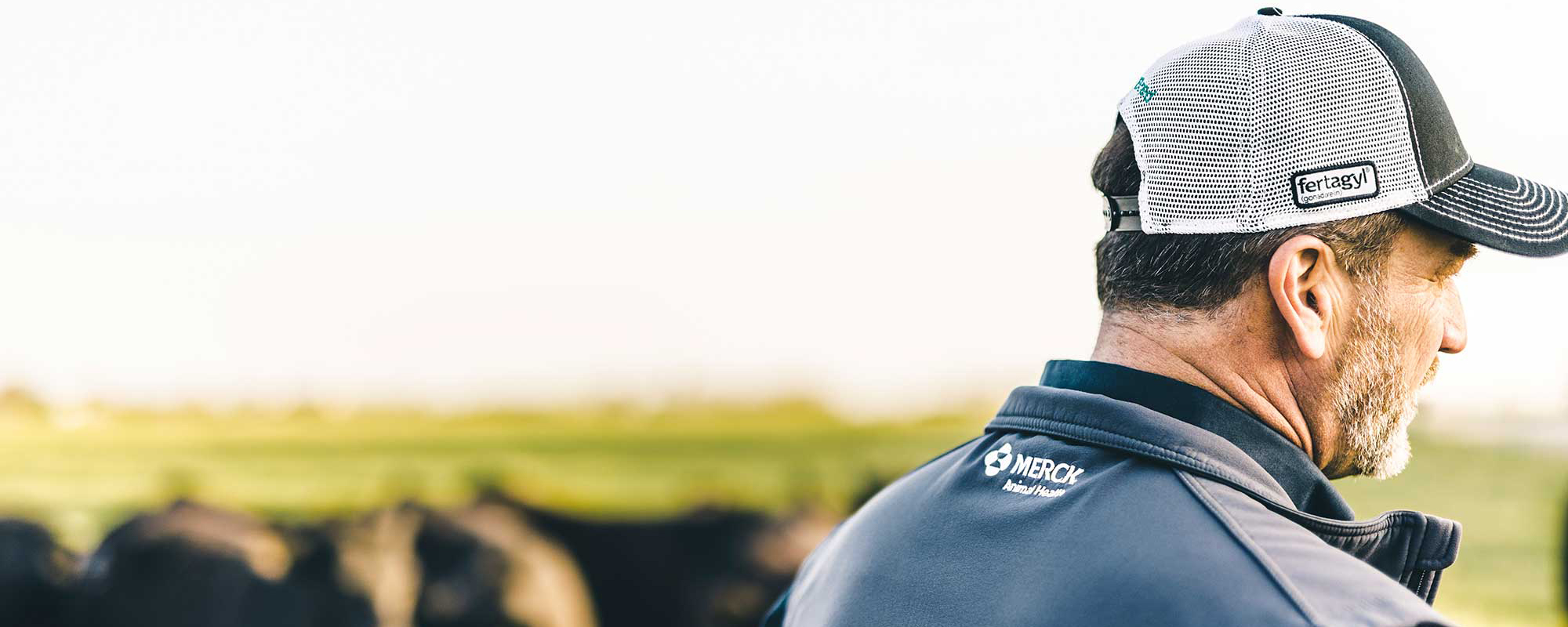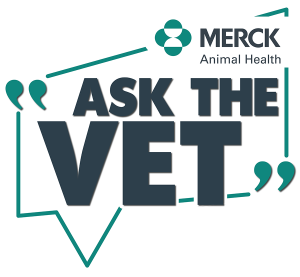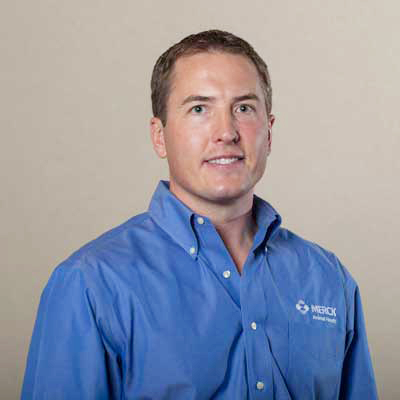

Reproductive Health
REPRODUCTIVE HEALTH.
YOU ASK. WE ANSWER.
Getting cows and heifers pregnant in a timely matter is critical to reaping economic advantages.
Merck Animal Health and Angus have teamed up to provide relevant advice and expertise to producers. Here, Todd Bilby, Ph.D., Director of cattle technical services at Merck Animal Health, answers commonly asked questions about optimizing reproductive health.
Q: What are the benefits of a tighter calving window?
A heavier and more consistent calf crop is more marketable. Getting more cows pregnant in the first 21 days of the breeding season increases weaning weights and provides a more uniform calf crop.
On the other hand, for every 21 days cows are open, between 20 and 40 pounds of weaning weight is lost.1,2 There is a lot of profit potential if we can get them bred within the first 21 days.
Heat synchronization can help you manage the timing of your breeding season.
Q: SHOULD I HEAT SYNCHRONIZE IF I USE NATURAL SERVICE?
A University of Nebraska-Lincoln study2 showed the following benefits of heat synchronizing with a single injection of prostaglandin 4.5 days (108 hours) after turning mixed-age bulls in with the cow herd:
• More cows calved during the first 21 days
• 20 lb. heavier calves at weaning
• Shortened breeding season from 60 to 45 days
• Heavier, more valuable carcasses worth an additional $77 per carcass at the feedlot
One shot of a prostaglandin 4 to 5 days after turning out the bulls is the optimal protocol. Learn about what prostaglandin Merck Animal Health offers here. However, if that protocol won’t fit your management system, one shot at turnout will still induce more cows to show heat sooner and get more cows calving during the first 21 days.
Q: HOW CAN I IMPROVE Al REPRODUCTIVE RESULTS?
Work with your veterinarian to:
• Make sure your vaccination program is optimizing conception rates and preventing reproductive loss through breeding and gestation periods
• Implement effective parasite management programs
• Perform breeding soundness exams, including advising on bull management and stocking rate
• Advise on nutrition and mineral programs
Your veterinarian also can help determine the heat synchronization program that is right for your operation.
HAVE A QUESTION?
SUBMIT YOUR QUESTION TODAY AT
Submit your question today. Ask your veterinarian, too. It’s important to work with your veterinarian who knows your goals and the health challenges 1n your area.
References
1. Cushman RA, Kill LK, Funston RN, Mousel EM, Perry GA. Heifer calving date positively influences calf weaning weights through six parturitions. J Anim Sci. 2013;91 :4486-4491.
2. Larson DM, Musgrave JA, Funston RN. Estrous synchronization increases early calving frequency, which enhances steer progeny value. Nebraska Beef Cattle Reports. 2010;14-16.

Dr. Todd Bilby
Todd Bilby, Ph.D., grew up on a farm in Northwest Missouri. In 1999, he received his B.S. from Oklahoma State University where he majored in Animal Science with a focus on business, and a minor in Ag economics. He went on to work with Dr. Rick Rorie to receive his M.S. in reproductive physiology in the department of Animal Science from the University of Arkansas. In 2005, Dr. Bilby received his Ph.D. from the University of Florida under the direction of Dr. Bill Thatcher, focusing on nutraceutical and pharmaceutical approaches to improve fertility by reducing embryo loss. After graduation, Dr. Bilby worked for Monsanto Dairy Business in the central valley of California serving as an Area Market Manager, managing a dairy sales territory and providing technical expertise. In 2007, he joined the faculty at the University of Arizona as an Assistant Professor and Extension Dairy Specialist. He worked in both extension and research. His research program focused on improving fertility during summer heat stress in the lactating dairy cow. Most recently, Dr. Bilby was on faculty with Texas A&M AgriLIFE Research and Extension as an Associate Professor and Dairy Extension Specialist where his research program focused on economically viable strategies to improve fertility in dairy cattle. Dr. Bilby joined Merck Animal Health in February of 2013 and is the Director of Ruminant Technical Services, managing the dairy technical services team and providing reproduction expertise for both dairy and beef cattle across the US. Dr. Bilby is a past recipient of the Top 40 under 40 in Agriculture award by Vance publishing and American Dairy Science Foundation Scholar award in Dairy Production.
